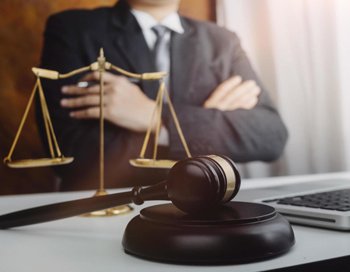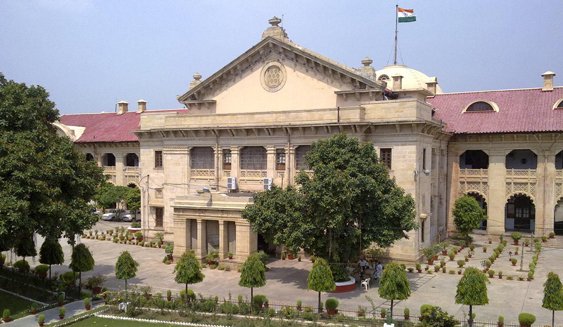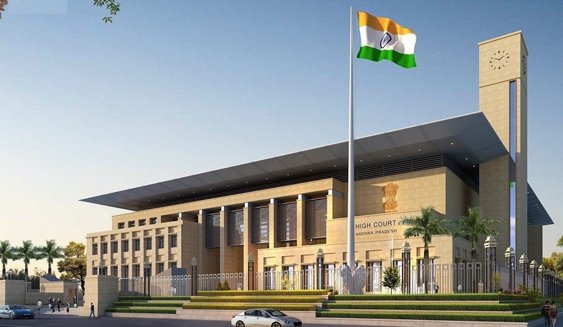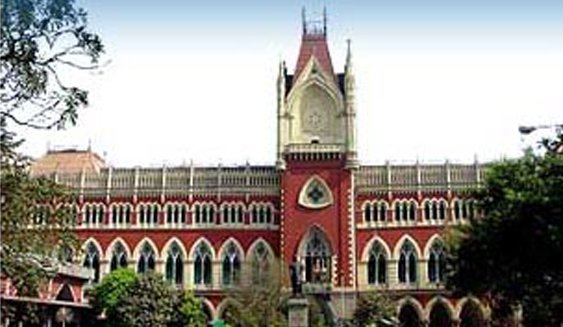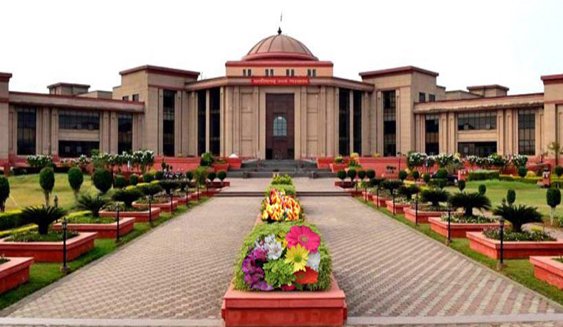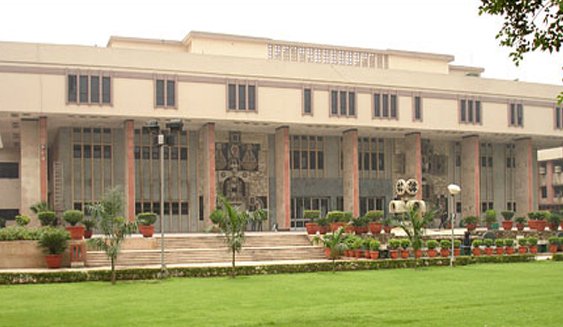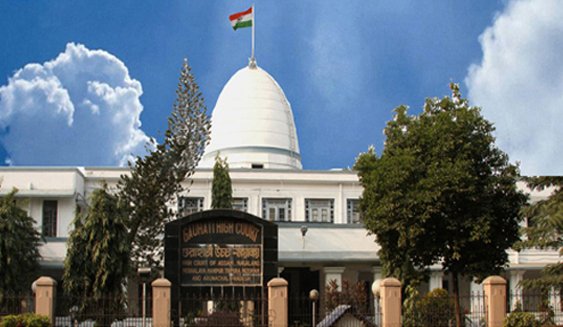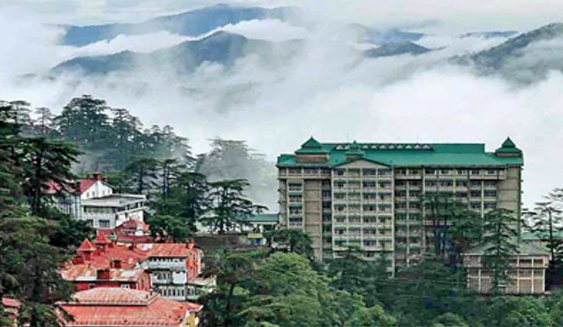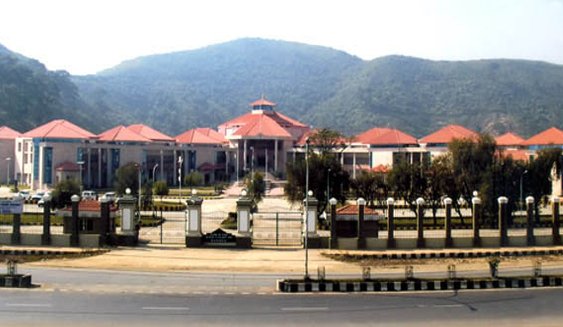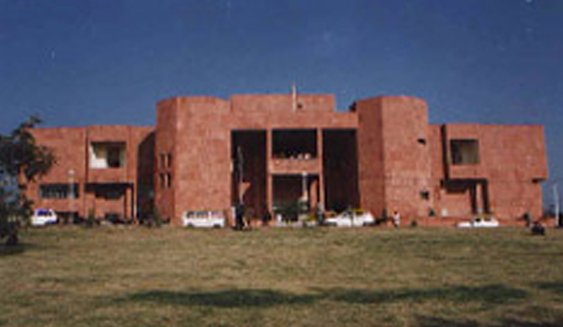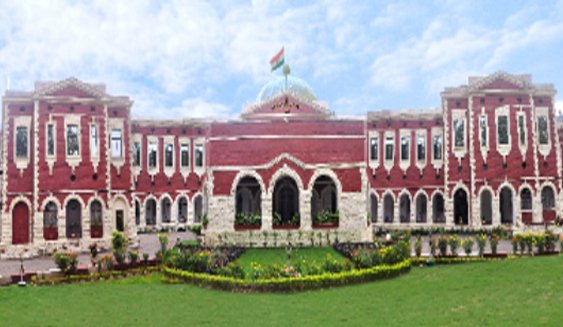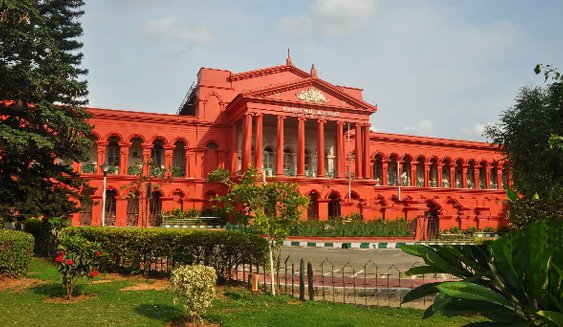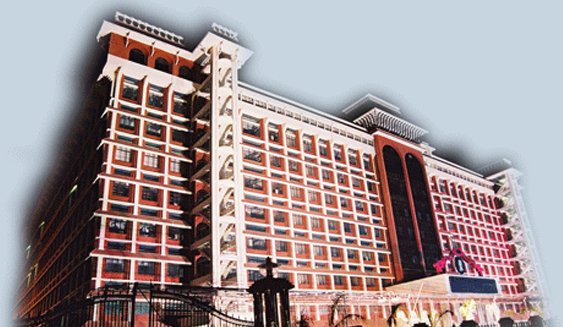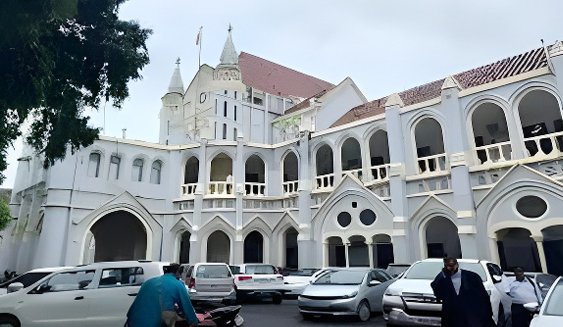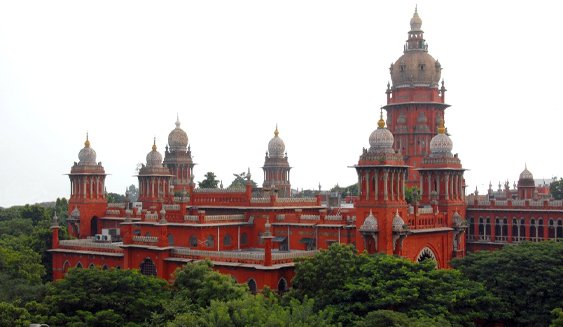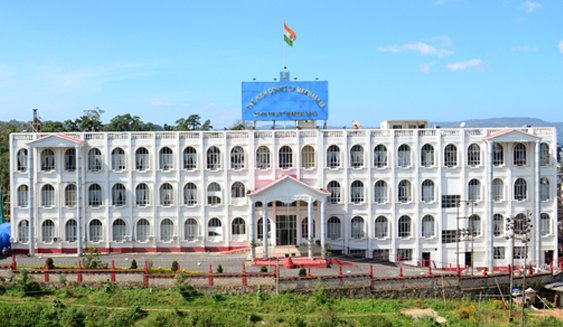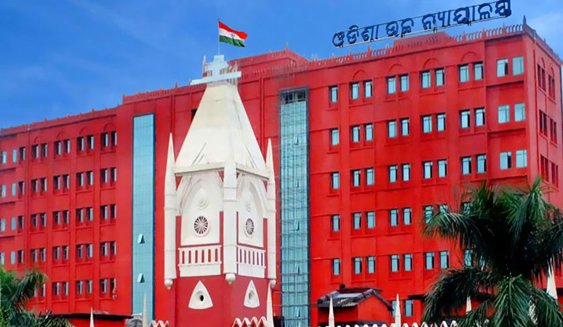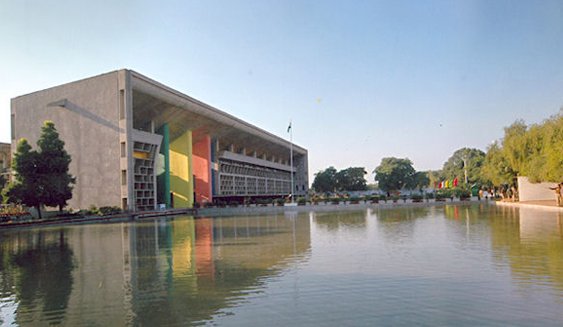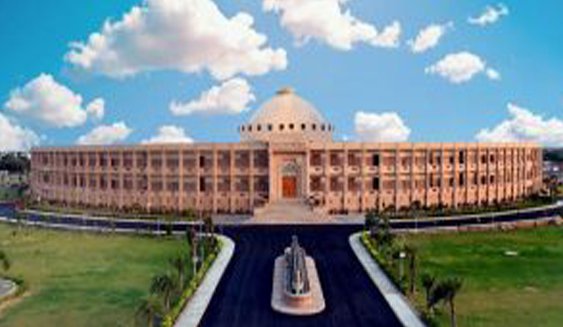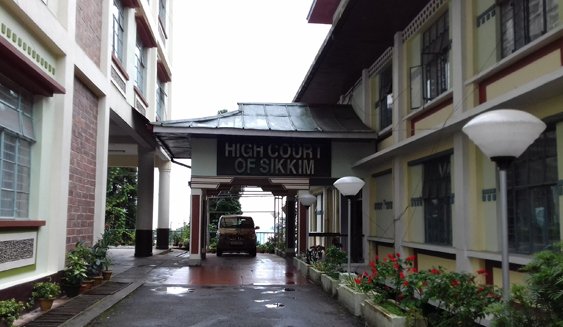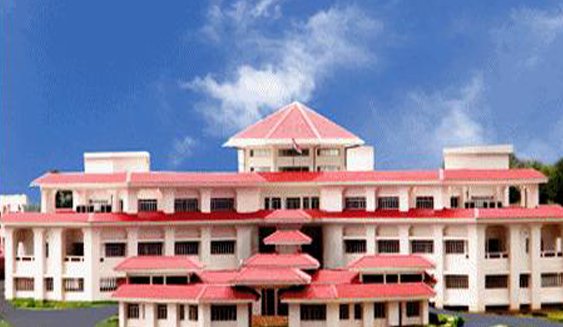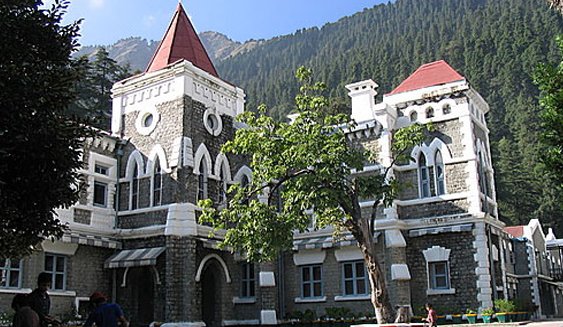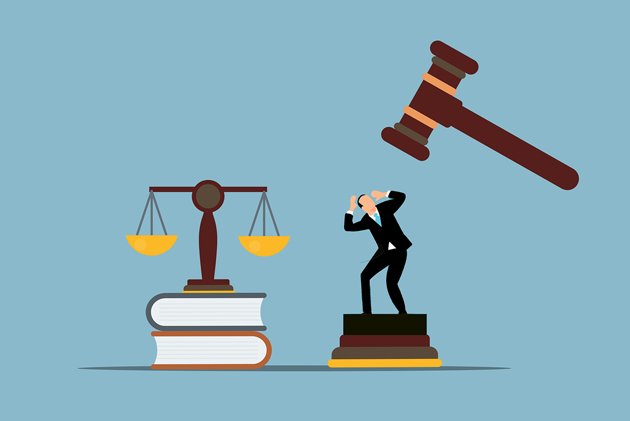
- By: Admin
- Posted on: 17-Jun-2025
From Possession To Prosecution: The Judicial Evolution Of Section 452 Of The Companies Act, 2013 And
1. Introduction
Section 452 of the Companies Act, 2013 provides for punishment for wrongful withholding of property belonging to a company by its officers or employees. This provision serves as a critical mechanism for companies to retrieve their properties from current or former officers or employees who wrongfully retain them. The section aims to provide a speedy and summary procedure for companies to recover their properties without resorting to lengthy civil litigation.
This research note provides a comprehensive analysis of Section 452, its legislative history, purpose, elements of the offense, landmark judicial interpretations, and recent amendments that have shaped its application.
2. Legislative Background and Purpose
2.1 Historical Context
Section 452 of the Companies Act, 2013 is the successor to Section 630 of the Companies Act, 1956. The provision was carried forward with modifications into the new legislation, reflecting its continued importance in corporate governance and asset protection. The provision was notified on September 12, 2013, as part of the Companies Act, 2013.
The primary purpose of Section 452, as consistently interpreted by courts, is to provide a speedy and summary procedure for retrieving the property of a company where it has been wrongfully obtained by an employee or officer, or where the property has been lawfully obtained but unlawfully retained after termination of employment.
2.2 Text of Section 452
The current text of Section 452 of the Companies Act, 2013, after amendments, reads as follows:
452. Punishment for wrongful withholding of property.
(1) If any officer or employee of a company—
(a) wrongfully obtains possession of any property, including cash of the company; or
(b) having any such property including cash in his possession, wrongfully withholds it or knowingly applies it for the purposes other than those expressed or directed in the articles and authorised by this Act,
he shall, on the complaint of the company or of any member or creditor or contributory thereof, be punishable with fine which shall not be less than one lakh rupees but which may extend to five lakh rupees.
(2) The Court trying an offence under sub-section (1) may also order such officer or employee to deliver up or refund, within a time to be fixed by it, any such property or cash wrongfully obtained or wrongfully withheld or knowingly misapplied, the benefits that have been derived from such property or cash or in default, to undergo imprisonment for a term which may extend to two years.
Provided that the imprisonment of such officer or employee, as the case may be, shall not be ordered for wrongful possession or withholding of a dwelling unit, if the court is satisfied that the company has not paid to that officer or employee, as the case may be, any amount relating to-
(a) provident fund, pension fund, gratuity fund or any other fund for the welfare of its officers or employees, maintained by the company;
(b) compensation or liability for compensation under the Workmen's Compensation Act, 1923 in respect of death or disablement.
3. Elements of the Offense
3.1 Two Distinct Offenses
From the bare reading of Section 452, it is evident that sub-section (1) creates two different and separate offenses:
Wrongfully obtaining possession: Clause (a) contemplates a situation wherein an officer or employee of the company wrongfully obtains possession of any property of the company during the course of employment.
Wrongfully withholding or misapplying: Clause (b) deals with cases where an officer or employee, having company property in their possession, wrongfully withholds it or knowingly applies it for purposes other than those expressed or directed in the articles and authorized by the Act.
The Supreme Court in Gopika Chandrabhushan Saran & Anr. v. M/s. Xlo India Ltd. & Anr. (2009) clarified this distinction, stating that "under this provision, it may be that an officer or an employee may have lawfully obtained possession of any property during the course of his employment, still it is an offence if he wrongfully withholds it after the termination of his employment".
3.2 Key Terms and Their Interpretation
Several key terms in Section 452 have been judicially interpreted:
"Property": Courts have consistently held that the term "property" in Section 452 includes both movable and immovable property. This includes company premises, residential accommodations, vehicles, cash, documents, and other assets.
"Wrongfully withholds": The Supreme Court in Lalita Jalan v. Bombay Gas Co. Ltd. (2003) defined "withholding" as "to hold back; to keep back; to restrain or decline to grant". The Court further explained that "the holding back or keeping back is not an isolated act but is a continuous process by which the property is not returned or restored to the company and the company is deprived of its possession".
"Officer or employee": Though the term primarily refers to current officers and employees, courts have consistently interpreted it to include past officers and employees as well.
4. Landmark Supreme Court Judgments
4.1 Baldev Krishna Sahi v. Shipping Corporation of India Ltd. (1987)
This landmark judgment established the broad interpretation of Section 630 of the Companies Act, 1956 (predecessor to Section 452). The Supreme Court held that a narrow construction should not be placed upon the section, and that the term "officer or employee" should be interpreted to include not only present officers and employees but also past officers and employees of the company.
The Court observed: "It is the wrongful withholding of such property, meaning the property of the company after termination of the employment, which is an offence under s. 630(1)(b) of the Act". This interpretation was crucial as it prevented employees from escaping liability by simply resigning or retiring.
4.2 Abhilash Vinodkumar Jain v. Cox & Kings (India) Ltd. (1995)
This pivotal case extended the application of Section 630 to legal heirs of deceased employees. The Supreme Court held that a petition under Section 630 is maintainable against the legal heirs of a deceased employee for retrieval of company property.
The Court conducted a thorough analysis of Section 630 and drew the following logical deductions:
Clause (a) is self-contained and independent of clause (b), creating penal liability for both existing and past officers or employees.
Clause (b) is equally independent and distinct from clause (a) regarding penal consequences and applies to past employees or officers.
The Court emphasized the need for a broad and liberal construction of the provision "in furtherance of the object and purpose of the legislation which would suppress the mischief and advance the remedy".
4.3 Lalita Jalan v. Bombay Gas Co. Ltd. (2003)
This case further extended the scope of Section 630 to family members of deceased employees. The Supreme Court held that family members who continue to occupy company premises after the death of an employee to whom the accommodation was allotted are liable under Section 630.
The Court clarified that Section 630 is applicable to "anyone inducted in possession of property by such persons and who continue to withhold the property". It further explained that "all those who come in possession of premises with express and implied consent of employee including his family members and do not vacate the premises would be withholding delivery of property to company”.
4.4 Gopika Chandrabhushan Saran & Anr. v. M/s. Xlo India Ltd. & Anr. (2009)
Building upon previous judgments, the Supreme Court in this case provided a comprehensive explanation of the provision's purpose and scope. The Court stated:
"The main purpose to make action an offence under Section 630 is to provide a speedy and summary procedure for retrieving the property of the company where it has been wrongly obtained by the employee or officer of the company or where the property has been lawfully obtained but unlawfully retained after termination of the employment of the employee or the officer".
The Court reaffirmed that from a bare reading of the section, sub-section (1) creates two different and separate offenses through clauses (a) and (b). The judgment also clarified the powers of the court under sub-section (2) to issue directions for delivery of possession and to impose imprisonment for non-compliance.
4.5 Shubh Shanti Services Ltd. v. Manjula S. Agarwalla (2005)
The Supreme Court in this case further clarified the distinction between the two offenses under sub-section (1) and emphasized that the provision does not distinguish between movable and immovable property.
The Court stated: "This Section does not make any difference between the movable and immovable property. The property in Section 630 includes both movable and immovable property" [6]. This interpretation expanded the scope of the provision to cover all types of company assets.
4.6 Hooghly Mills Company Ltd. v. The State Of West Bengal And Anr. (2019)
In this more recent judgment, the Supreme Court addressed the interplay between civil disputes and proceedings under Section 630. The Court held that "the mere issuance of a temporary injunction by the civil court directing maintenance of status quo in respect of the disputed property does not make the dispute bona fide or bar the company's right to recover the disputed property from the accused employee under Section 630 of the 1956 Act".
Importantly, the Court also clarified that Section 630(2) allows the Magistrate to grant interlocutory relief prior to the conclusion of the trial under Section 630(1), stating:
"There is no stipulation in Section 630(2) that an order for delivery of wrongfully withheld property must be made only after the accused has been convicted under Section 630(1). Rather, it says the Court 'trying' the offence may direct the delivery of such property, which indicates that such an order may be passed at any stage by the trial court".
5. High Court Interpretations
Various High Courts have contributed to the jurisprudence on Section 452 (and its predecessor Section 630) through significant judgments:
5.1 Delhi High Court
In Dr. D K Modi v. Modi Rubber Ltd. & Ors. (2022), the Delhi High Court highlighted the summary nature of the procedure under Section 630 and clarified that "the concerned criminal court cannot determine the dispute as to the title of the property under dispute. Obviously, such questions are to be decided by the competent civil court".
The Court further observed: "Section 630 of the Companies Act can be invoked when there is no dispute or in any event, no bonafide dispute with respect to the property in question exists. If there is any dispute involving title to the property, the same would be adjudicated by the concerned civil court and not by Magistrate under Section 630 of the Companies Act".
In Prushottam Iron & Steel Industries (Pvt) Ltd. v. Rajneesh Gupta (2016), the Delhi High Court reiterated the purpose of Section 630 as explained by the Supreme Court in Shubh Shanti Services Ltd. and Gopika Chandrabhushan Saran.
5.2 Jurisdiction of Special Courts
With the Companies (Amendment) Act, 2020, Section 435 of the Companies Act, 2013 was amended to exclude offenses under Section 452 from the jurisdiction of Special Courts. This means that regular criminal courts, and not the Special Courts established under the Companies Act, now have jurisdiction over offenses related to wrongful withholding of property.
6. Key Amendments and Legislative Changes
6.1 Differences Between Section 630 of 1956 Act and Section 452 of 2013 Act
While Section 452 largely maintains the structure and purpose of its predecessor Section 630, there are some notable differences:
Enhanced penalties: The fine under Section 452 has been increased to "not less than one lakh rupees but which may extend to five lakh rupees" compared to "which may extend to ten thousand rupees" under Section 630.
Expanded scope: Section 452 explicitly includes "cash" as part of the property that may be wrongfully obtained or withheld, though courts had already interpreted "property" broadly under Section 630.
Exclusion from Special Courts: With the 2020 amendment, offenses under Section 452 are now excluded from the jurisdiction of Special Courts established under the Companies Act.
6.2 Companies (Amendment) Act, 2020
A significant amendment to Section 452 was made through the Companies (Amendment) Act, 2020, which came into effect on January 22, 2021. This amendment added a proviso to sub-section (2) of Section 452, which states:
"Provided that the imprisonment of such officer or employee, as the case may be, shall not be ordered for wrongful possession or withholding of a dwelling unit, if the court is satisfied that the company has not paid to that officer or employee, as the case may be, any amount relating to—
(a) provident fund, pension fund, gratuity fund or any other fund for the welfare of its officers or employees, maintained by the company;
(b) compensation or liability for compensation under the Workmen's Compensation Act, 1923 in respect of death or disablement."
This amendment provides protection to employees against imprisonment in cases where they withhold dwelling units (residential accommodations) if the company has failed to pay their statutory dues such as provident fund, gratuity, or compensation.
Additionally, through Section 60 of the Companies (Amendment) Act, 2020, Section 435 of the Companies Act, 2013 was amended to exclude offenses under Section 452 from the jurisdiction of Special Courts.
7. Practical Implications and Application
7.1 Who Can File a Complaint
According to Section 452(1), a complaint can be filed by:
The company itself
Any member of the company
Any creditor of the company
Any contributory of the company
This provision ensures that multiple stakeholders can initiate action to protect company property [1].
7.2 Two-Tier Punishment Mechanism
Section 452 establishes a two-tier punishment mechanism:
First tier (Sub-section 1): Imposition of a fine ranging from one lakh rupees to five lakh rupees upon conviction.
Second tier (Sub-section 2): The court can order the delivery or refund of the property or cash within a specified time, and in case of default, can order imprisonment for up to two years. As clarified in Lalita Jalan, "it is non-compliance or non-observance of the order of the Court regarding delivery or refund of the property which results in making the person so directed liable for being awarded a substantive sentence of imprisonment".
7.3 Continuing Offense
Courts have consistently held that wrongful withholding of property is a continuing offense. In Lalita Jalan, the Supreme Court observed that "the holding back or keeping back is not an isolated act but is a continuous process by which the property is not returned or restored to the company" [7]. This means that limitation does not begin to run as long as the wrongful withholding continues.
7.4 Relationship with Civil Proceedings
The Supreme Court in Hooghly Mills Company Ltd. clarified that the pendency of civil proceedings does not bar criminal proceedings under Section 452 (or Section 630). The Court stated that "the cause of action in the civil suit is completely different from the question of whether the employee is wrongfully withholding the company's property, which is the issue for consideration in the present criminal proceedings".
However, as observed by the Delhi High Court in Dr. D K Modi, if there is a genuine dispute regarding the title to the property, such a dispute would need to be adjudicated by a civil court rather than in proceedings under Section 452.
7.5 Protection for Employees After 2020 Amendment
The 2020 amendment provides significant protection to employees in cases involving dwelling units. If a company has failed to pay statutory dues such as provident fund, gratuity, or compensation, the court cannot order imprisonment for wrongful possession or withholding of a dwelling unit. This amendment recognizes the potential vulnerability of employees and provides a safeguard against imprisonment in cases where companies have failed to fulfill their statutory obligations.
8. Conclusion
Section 452 of the Companies Act, 2013, continuing the legacy of Section 630 of the 1956 Act, serves as a vital tool for companies to retrieve their properties from officers or employees who wrongfully obtain or withhold them. Through a series of landmark judgments, the Supreme Court has provided a broad and liberal interpretation of this provision, extending its application to past employees, legal heirs, and family members.
The section creates two distinct offenses—wrongful obtaining of possession and wrongful withholding or misapplication—and establishes a two-tier punishment mechanism involving fines and potential imprisonment for non-compliance with court orders.
The 2020 amendment has introduced an important protection for employees regarding dwelling units when companies have failed to pay statutory dues, reflecting a balance between protecting company property and recognizing employees' rights.
As observed across multiple judgments, the primary purpose of Section 452 is to provide a speedy and summary procedure for companies to retrieve their properties without having to resort to lengthy civil litigation. This purpose continues to guide the courts' interpretation and application of this provision.
Authored By:
Ms. Nivedita Chauhan, Advocate
Founder & Managing Partner
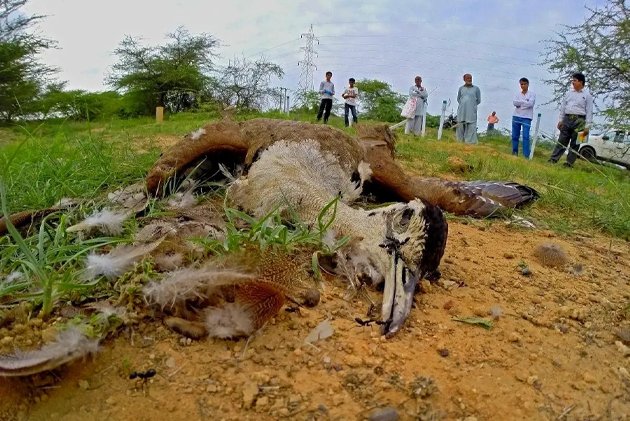
- By: Admin
- Posted on: 25-May-2025
Striking A Balance Between Development And Nature- The Role Of Judiciary In Implementation Of Energy
INTRODUCTION
Homo sapiens have been curious about their surroundings since the dawn of civilization pushing their limits to unlock their intellectual potential and paving the way to some life-changing inventions, electricity proved to be one of the most essential inventions of mankind towards the overall economical productivity. It is pertinent that Electricity has been lighting lives with its huge contribution to the society in a variety of ways since the 18th century.
The building of Thomas A. Edison’s Pearl Street Station, a Dc generator and radial lines transmission system used primarily for lighting, in New York City in the year 1882, played an important role in laying the foundation of the modern electric power transmission. The structure of electricity sector in India finds its place in the concurrent list of the Indian Constitution. Speaking of the legislation pertaining to electricity, the Electricity Act, 2003 has succeeded the Electricity Act, 1887 and the Electricity Act, 1903 and, is a full packaged legislation consolidating the laws relating to generation, transmission, distribution, trading, and use of electricity in India. After the process of generation, electricity is transmitted through government or private transmission utilities like the Power Grid Corporation of India Limited for interstate transmission and for state and the State Transmission Utility (STU) for setting up intra-state transmission projects. Distribution companies conduct the process of dissemination of electricity with the end customers.
Although, the laws prevailing in India pertaining to electricity envisage promotion of environmentally benign policies and avoidance of environmental damage, the negative impact of the electricity generation on the environment cannot be completely eradicated. In the process of generating and transmitting electricity, flora and fauna are also being harmed. Several species of birds either die due to collision with the high-tension wires or due to electrocution. Some species of birds like the Great Indian Bustard and the Lesser Floricans, mostly found in the Indian sub-continent (Rajasthan & Gujarat) are true examples of the above defined phenomenon, on account of which, both these species are on the verge of extinction.
THE GREAT INDIAN BUSTARD:
The Great Indian Bustard or Ardeotis Nigriceps (in short, ‘GIB’) is one of the heaviest flying birds in the world ranging from 15-18 Kilograms, about a meter in height and having wingspan of 210-250 cm. Its population is confined mostly to Rajasthan and Gujarat with small populations in Maharashtra, Karnataka and Andhra Pradesh. It is construed as the front runner grassland species, representing the health of the grassland ecology.
There are several factors responsible for the rapid decline in their population, but the electric power lines pose a significant threat to the survival of GIBs. Bustards seemingly have sideways vision to maximize predator detection but have poor frontal vision thereby preventing them from detecting the power lines. The GIB is listed in Schedule I of the Indian Wildlife (Protection) Act, 1972 and under the Conservation of Migratory Species of Wild Animals (“CMS”).
It has been identified as one of the species for the recovery program under the integrated development of Wildlife Habitats of the Ministry of Environment and Forests, Government of India. Further, surveys conducted by Wildlife Institute of India (WII) Power Line Mitigation, 2018 states that about 16 (sixteen) GIB die per year amounting to a population of about 150 individuals in Thar desert region, therefore, such high mortality rate is unsustainable for these species and will certainly result in its extinction. It is also evident from the 13th Meeting of the Conference of the United Nations Convention on Migratory Species of Wild Animals (CMS) hosted by the Central government from 17th to 22nd February 2020, at Gandhinagar pursuant to the Proposal submitted on behalf of the Government of India wherein it was stated that, the GIB population in India had fallen to just 150 out of which 128 (one hundred and twenty eight) birds were in Rajasthan, 10 (ten) in Kutch district of Gujarat and a few in Maharashtra, Karnataka and Andhra Pradesh.
International Union for Conservation of Nature’s Red List (IUCN) of threatened species reclassified the GIB as critically endangered in 2011. According to ecologists, approximately 90% natural geographic range of this species has been lost due to linear infrastructure intrusions. The Worldwide Fund (“WWF”) has provided inputs in developing the guidelines for the state action plan for resident Bustard Recovery Program in India.
LESSER FLORICANS-
The International Union for Conversation of Nature’s Red List of threatened Species declared the Lesser Floricans to be critically endangered species and less than 1000 individuals being alive as of 2017. It is of topmost conservation priority which shows transboundary movements. Its migration exposes it to threats such as land use changes, hunting and degradation due to Collison. It is the smallest in the Bustard family and only member of genus Houbaropsis which will be extinct in 25 years if proper protective measures are not effectuated.
JUDICIAL ACTIVISM TOWARDS SAFEGUARDING THE ENDANGERED SPECIES-
To back up the objective of protecting the endangered species, various legislative provisions and Acts have been enacted by the Government of India. The Constitution of India is the supreme law which not only protects the human rights but also poses obligation on human beings to protect the endangered species from extinction. Article 21 of the Constitution of India, 1950 states that Right to life is a fundamental right of every individual.
In M.C Mehta vs Kamal Nath the Hon’ble Supreme Court enunciated that, certain common properties like the water bodies, forests and air comes under the trusteeship of the Government. The state as a custodian of the natural resources has a duty to protect them not only for human needs but for the flora and fauna, wildlife and so on.
Whereas Article 48A and Article 51(G) envisage protection and improvement of environment and safeguarding of forests and wildlife. In T.N. Godavarman Thirumulpad Vs. Union of India & Ors., the Hon’ble Supreme Court observed that environmental justice could be achieved only if we drift our focus from the Principle of Anthropocentric to Ecocentrism. Anthropocentric is a concept that means humans are the most important element of existence and their needs comes above all, whereas Ecocentrism is nature-centered where humans are part of nature. Furthermore, in Centre for Environmental Law, World Wide Fund – India Vs. Union of India & Others, the Hon’ble Supreme Court considered the protection and conservation of endangered species and observed that Sustainable Development is the development that meets the needs of the present without compromising the ability of future generations to meet their own needs argued upon by eminent environmentalists to be anthropocentric and least concerned with the rights of other species.
SUPREME COURT’S DIRECTIONS FOR THE PROTECTION OF GREAT INDIAN BUSTARD AND EMPHASIS ON ADOPTION OF ECO-CENTRIC APPROACH-
To address the most pertinent issue towards the protection of GIB and Lesser Florican, which are on the verge of extinction, environmentalists filed a writ petition titled as M.K. Ranjitsinh v. Union of India and Others. The Petitioners had also filed a separate application seeking interim directions to the state of Rajasthan and Gujarat which are stated as under:
Ensure predator proof fencing and controlled gazing in the enclosure development.
Disallow installation of overhead power lines.
To not permit further construction of windmills.
Installation of solar infrastructure in priority and potential habitat as identified by the Wildlife Institute of India.
Install divertors for the power lines in the state of Rajasthan and Gujarat.
The respondents in the said petition whilst expressing their sensitivity to the issue contended that the cause of the death of the endangered GIB is not the electrocution but the collision with the power lines and further contended technical unfeasibility of laying the underground high voltage power line owing to several factors such as, high cost, high downtime to repair any failed cable, non-availability of cables at 765 Kv level and increase in the number of joints with length of run. The petitioners on the other hand contended that, many states have already undertaken the move of laying the high voltage power lines underground. In this regard, the petitioners in addition to referring to the invitation of public comments for laying underground cable transmission line by the Government of India, Ministry of Road Transport and Highways, referred to the report published by the PGCIL indicating that the undergrounding of 220 kV power line is possible and is being done in India. To illustrate further, the petitioners also referred to the existence of the underground 10 kilometres long power lines by GETCO for the safety of Greater Flamingos in the Khadir Region of Kutch. Whereas, it was submitted by the respondents that the underground power lines cannot be made comparable in all cases in as much as the same would be possible depending upon the area, terrain and the distance for which such cable line is to be laid which cannot be of universal application.
In the backdrop of the submissions made by the parties to the Petition, the 3 Judge bench comprising of Hon’ble Mr. Justice S.A Bobde, Former Chief Justice of India, Hon’ble Mr. Justice A.S Bopanna and Hon’ble Mr. Justice V. Ramasubramanian addressed the issue and remarked as under:
“…keeping in view, the sustainable development concept and on striking a balance the protection of the rare species of birds is essential to be made, the effort being to save every bird while at the same time allowing transmission of power in an appropriate manner…….”
After taking into consideration the submissions made on behalf of the parties, various reports on environment and judicial precedents, the bench directed that government shall take effective measures towards-
Installation of divertors to the already established overhead powerline or pending for the conversion to underground powerline pending in GIB habitats.
Study shall be conducted regarding the feasibility for the lines to be laid underground.
For the overhead power lines to be laid in future, the installation of the divertors shall also be a condition attached in the contract to be entered with the power generating companies.
Introduction of underground system of powerlines where it is feasible within one year is to be ensured, irrespective of the cost factor.
Considering the suggestive arguments made towards the mobilization of the financial resources to save the near extinct birds, the Hon’ble Bench directed the attention to the following:
The electricity utility engaged in the generation of power to make use of Section 135 of the Companies Act, 2013, which imposes Corporate Social Responsibility upon companies having specified net worth and turnover.
Implementation of the Afforestation Fund Act, 2016 (CAF, 2016), whereby, substantial funds are available with the National and State Authorities. The State of Rajasthan has already set up a Compensatory Afforestation Fund Management and Planning Authority. Rule 5(2)(i) of CAMPA Rules permit the use of the State Fund for the improvement of wildlife habitat.
The area where these birds (GIB and Lesser Floricans) lay eggs should be earmarked, fenced, and protected.
The low voltage overhead powerlines existing presently in the priority and potential heads habitats of GIB shall be converted into underground powerlines (subject to feasibility).
For assessing the feasibility of laying of high voltage underground powerline, the Bench constituted a committee consisting of Dr. Rahul Rawat (Scientist), Dr. Sutirtha Dutta (Scientist) and Dr. Devesh Gadhavi, Deputy Director (The Corbett Foundation), being the experts of their relevant fields. The Committee was granted liberty to obtain technical reports, if need be, from experts in the field of electricity.
The respondents were directed to approach the Committee with all relevant material and particulars in situations where they experience the issues relating to feasibility of laying the underground power lines and/or converting the overhead powerlines to underground powerlines.
The Committee shall assess the issue and arrive at the conclusion through a report and based on such report, the Respondents would, in all such cases where it is found feasible to lay the underground power lines and/or to convert the overhead powerlines to underground (as the case may be), complete the same within one year and till such time the divertors are hung from the existing powerlines.
COMPLIANCE OF THE HON’BLE SUPREME COURT’S JUDGMENT-
The abovementioned directions of the Hon’ble Supreme Court are strictly binding on the Central Electricity Regulatory Commission (CERC), Central Transmission Utilities (CTU) and State Transmission Utilities (STU).
The Hon’ble CERC, New Delhi vide its order dated 26.08.2021 passed in Petition Nos. 136/TL/2021; 141/AT/2021; 137/TL/2021; 138/AT/2021; 139/TL/2021 and 140/AT/2021 concerning the Projects of Fatehgarh Bhadla Transco Limited and Sikar New Transmission Limited, disposed of the said Petitions with a view that no purpose will be served in keeping such petitions pending till compliance of the Order of the Hon’ble Supreme Court, as such projects fall within the potential habitat of GIB. However, the liberty was granted to the Petitioners to approach the Commission with fresh Petitions in this regard after such compliance. Hon’ble Commission further clarified that when the Petitioners are aware of the measures required to be undertaken yet the same remained unattended, it would not be appropriate to create potential liabilities and pass on such liabilities to the beneficiaries and consumers under change in law.
The Committee in compliance of the Order submitted the status report dated 20.04.2022 before the Hon’ble Supreme Court as was recorded in the hearing of the said writ petition on 21.04.2022, which indicated that eight applications were received by the Committee seeking exemption from the requirement of setting up underground transmission lines. In pursuance of those applications, the Committee had obtained the technical report from the CEA upon the feasibility of the undergrounding 400 kV and 765 kV transmission lines. Another technical report has also been sought by the Committee from CEA on the undergrounding of 66 kV and 220 kV transmission lines to which a reply was awaited. The Hon’ble Supreme Court in the said hearing also ordered for the injunction imposed in the preceding order to be scrupulously enforced, on the installation of the fresh overhead transmission lines, save with the approval of the Committee.
CONCLUSION
The word “environment” is defined as the “inter relationship which exists among and between water, air and land, and human beings, other living creatures, plants, micro organisms and property”. The Hon’ble Supreme Court played a proactive role in the public interest litigation by striking a balance between the protection of the rare species of birds and the development in the electricity sector in India and reminded the State yet again, its duty as that of a custodian of the natural resources and to preserve and maintain them not merely for the benefit of the public, but also for the best interest of flora and fauna. The Hon’ble Supreme Court had directed the installation of the divertors and conversion of the overhead cables into underground powerlines and undergrounding the overhead powerlines wherever feasible and directed the same to be completed within a specified period. Further, the Hon’ble Supreme Court, besides noting that the progress in installation of the bird divertors by the State of Rajasthan being deficient in all respects, imposed the injunction on the installation of the fresh overhead transmission lines, save with the approval of the Committee and directed the same to be enforced scrupulously.
However, media report dated 28th July, 2021 suggests that, the Central government informed the Rajya Sabha that there were no GIB in Kutch Bustard Sanctuary in Gujarat’s Kutch district as on January 1, 2021. The reply, which came in response to a question posed by Congress MP Shaktisinh Gohil, raised many eyebrows among conservationists and wildlife enthusiasts as it had come just three months after the Supreme Court’s order to power companies to place their overhead powerlines underground in GIB habitat in Rajasthan and Kutch to save the species from going extinct.
The dwindling number of the Great Indian Bustard and Lesser Florican can be curbed by making no overhead Power-line zone by adopting underground powerline to prevent power-line mortality on account of collision and electrocution and, by providing a safe-haven for these endangered birds for breeding by earmarking, fencing, and protecting such area for the said purpose. Although the survey conducted by the WII indicates that it would not be feasible to lay underground power cables in certain areas and therefore in such locations, bird divertors should be installed on the existing power lines in the vicinity of the habitats of these endangered birds.
Further, the construction manuals prescribed by CTUs and/or STUs for construction of the transmission lines and the incidental EPC contracts need to be re-visited to make necessary additions/alterations towards the bird-friendly construction principles and incorporate effective solutions of insulation of poles of medium-voltage power lines such as Silicon cover of jumper wire and plastic hood on support insulator (as implemented in Slovakia), console cover and plastic black hood on support insulator (as implemented in Hungary) and to incorporate different types of bird flight diverters such as Firefly Bird Protection, Aerial marker balls (as installed in countries like Austria and Slovakia), Bird Mark Afterglow, RIBE Lamellas, etc. as may be made applicable in the power lines installed or to be installed in India.
Lastly, a holistic approach needs to be adopted to protect every flora and fauna whilst allowing transmission of power in an effective manner to promote the development in the most sustainable way possible else the days are not far, that species like GIB and Lesser Floricans would be counted as extinct and would merely be reduced as images with a brief background in school textbooks.
Authored By:
Ms. Nivedita Chauhan, Advocate
Founder & Managing Partner
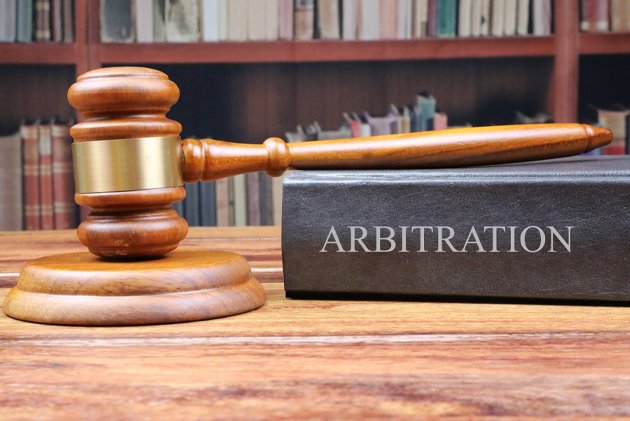
- By: Admin
- Posted on: 03-Jun-2025
Judicial Interpretation of Section 34 of the Arbitration and Conciliation Act: Balancing Arbitral Au
The Arbitration and Conciliation Act, 1996 was enacted with the primary objective of providing a speedy and cost-effective dispute resolution mechanism while minimizing judicial intervention. Section 34 of the Act, which governs the challenging of arbitral awards, has been subject to extensive judicial interpretation over the years. This article examines the scope and application of Section 34 through the lens of recent judicial pronouncements, particularly focusing on the Supreme Court's decision in Consolidated Construction Consortium Ltd. v. Software Technology Parks of India (2025) ibclaw.in 166 SC.
The Framework of Section 34
Section 34 of the Arbitration and Conciliation Act provides specific grounds for challenging arbitral awards. These grounds are exhaustive and include party incapacity, invalid arbitration agreements, lack of proper notice, awards exceeding the scope of submission to arbitration, improper composition of the tribunal, non-arbitrable subject matter, and conflict with public policy.
The provision is designed to ensure minimal judicial intervention while maintaining the integrity of the arbitral process. Courts have consistently emphasized that the scope of interference under Section 34 is narrow and that they cannot reappraise evidence or review the merits of the case.
The Consolidated Construction Case: Facts and Background
In Consolidated Construction Consortium Ltd. v. Software Technology Parks of India, the Supreme Court addressed a dispute arising from a construction contract. The appellant (Consolidated Construction) had been awarded a contract to build an office complex for the respondent (Software Technology Parks of India) . The project, with a total cost of Rs. 16,48,69,970.00, was initially scheduled for completion by January 15, 2007, but was only completed on November 30, 2007, resulting in a 10-month delay.
The respondent deducted Rs. 82,43,499.00 as liquidated damages due to the delay. The appellant challenged this deduction, arguing that the respondent had extended the completion time and that the work was finished within the extended period.
Judicial Journey of the Dispute
The dispute went through multiple levels of adjudication:
An arbitral tribunal ruled in favor of the respondent, allowing the deduction of liquidated damages.
The appellant challenged this award under Section 34 of the Act before a Single Judge of the Madras High Court, who set aside the award.
The respondent appealed to a Division Bench of the High Court under Section 37 of the Act, which reversed the Single Judge's decision and restored the arbitral award.
The appellant then approached the Supreme Court.
Supreme Court's Analysis
The Supreme Court's judgment in Consolidated Construction provides valuable insights into the interpretation and application of Section 34. The Court emphasized that the role of courts under Section 34 is "clearly demarcated" and represents a "restrictive jurisdiction" that "has to be invoked in a conservative manner".
The Court observed that "arbitral autonomy must be respected and judicial interference should remain minimal otherwise it will defeat the very object of the 1996 Act". This observation aligns with the pro-award approach that Indian courts have adopted over the years.
In examining the Single Judge's decision to set aside the arbitral award, the Supreme Court found that the judge had exceeded the jurisdiction under Section 34 by essentially reappraising the evidence and substituting their own view for that of the arbitral tribunal.
The Concept of Public Policy
One of the most frequently invoked grounds for challenging arbitral awards under Section 34 is conflict with public policy. The concept of public policy has evolved through judicial decisions. In ONGC v. Saw Pipes Ltd. (2003) 5 SCC 705, the Supreme Court expanded the scope to include "patent illegality," while later judgments like Associate Builders v. DDA (2015) 3 SCC 49 emphasized minimal interference.
Section 34 now includes Explanation 1, which clarifies that an award is in conflict with the public policy of India only if the making of the award was induced or affected by fraud or corruption, is in contravention with the fundamental policy of Indian law, or is in conflict with the most basic notions of morality or justice.
Explanation 2 further specifies that the test for contravention with the fundamental policy of Indian law shall not entail a review on the merits of the dispute. This reinforces the principle that courts should not act as appellate bodies when examining arbitral awards.
Patent Illegality
Section 34(2-A) allows for setting aside an arbitral award arising out of arbitration other than international commercial arbitration if the court finds that the award is vitiated by patent illegality appearing on the face of the award. However, the proviso to this sub-section clarifies that an award shall not be set aside merely on the ground of an erroneous application of the law or by reappreciation of evidence.
In Associate Builders v. Delhi Development Authority, the Supreme Court elaborated that "patent illegality" must go to the root of the matter and cannot be trivial. It includes contraventions of substantive law, the Arbitration Act, or the terms of the contract.
Procedural Aspects of Section 34
Section 34 also outlines important procedural aspects for challenging arbitral awards:
Time Limit: An application to set aside an arbitral award must be made within three months from the date of receipt of the award, with a possible 30-day extension for sufficient cause.
Partial Setting Aside: If decisions on matters submitted to arbitration can be separated from those not submitted, only the part of the award dealing with matters not submitted to arbitration may be set aside.
Remission to Arbitral Tribunal: The court may adjourn proceedings and remit the matter to the arbitral tribunal to eliminate grounds for setting aside the award .
Voidable Contracts and Section 55 of the Indian Contract Act
In the Consolidated Construction case, the Supreme Court also touched upon Section 55 of the Indian Contract Act, 1872, which deals with time as the essence of a contract. Under this section, a contract becomes voidable at the promisee's option if the promisor fails to perform obligations by a specified time, provided that time was intended to be of the essence of the contract.
The intention to make time essential must be expressed in unmistakable language or inferred from the nature of the property, conduct of the parties, and surrounding circumstances. If time is not of the essence, the contract does not become voidable due to failure to perform within the specified time, but the promisee is entitled to compensation for any loss caused by the delay.
In construction contracts, courts generally presume that time is not of the essence unless explicitly stated otherwise. This principle was relevant in the Consolidated Construction case, where the appellant argued that time was not of the essence in the construction contract.
Conclusion
The Supreme Court's decision in Consolidated Construction Consortium Ltd. v. Software Technology Parks of India reinforces the principle of minimal judicial interference in arbitration matters and the finality of arbitral awards except on very limited grounds as specified in Section 34 of the Arbitration and Conciliation Act.
Section 34 strikes a balance between judicial oversight and arbitral autonomy, providing specific grounds for challenging awards while ensuring minimal interference. Judicial interpretations have further refined its scope, emphasizing the principles of finality, expediency, and deference to the arbitral process.
As the jurisprudence on Section 34 continues to evolve, it is clear that Indian courts are committed to upholding the integrity of arbitration as an effective alternative dispute resolution mechanism while ensuring that fundamental legal and procedural standards are met.
Authored By:
Ms. Nivedita Chauhan, Advocate
Founder & Managing Partner

- By: Admin
- Posted on: 03-Jun-2025
Landmark Judgments by the Hon’ble Supreme Court of India on Labour Laws
The Supreme Court of India has played a pivotal role in shaping the landscape of labour law jurisprudence in India. Through numerous landmark judgments, the Court has interpreted various labour legislations, defined concepts, and established principles that continue to guide industrial relations and protect workers' rights. The following is a comprehensive examination of the most significant judicial pronouncements in this field:
Definition of 'Industry' and Scope of Industrial Law
1. Bangalore Water Supply & Sewerage Board v. A. Rajappa, (1978) 2 SCC 213
This watershed judgment delivered by a seven-judge bench led by Justice V.R. Krishna Iyer substantially expanded the scope of the term 'industry' under the Industrial Disputes Act, 1947. The Court established the famous 'Triple Test' to determine whether an establishment qualifies as an industry:
Systematic activity organized by cooperation between employer and employee
Production and/or distribution of goods and services to satisfy human wants and wishes
The existence of an employer-employee relationship
This judgment brought numerous establishments like hospitals, educational institutions, clubs, and even government departments within the ambit of 'industry', thus extending the protections of industrial law to a much wider section of the workforce. This definition prevailed until specific amendments to the Industrial Disputes Act were made, though those amendments have not been brought into force.
2. State of Bombay v. Hospital Mazdoor Sabha, AIR 1960 SC 610
This judgment, which preceded Bangalore Water Supply, was one of the early cases that expanded the definition of 'industry' by including hospitals within its scope. The Court held that charitable activities or service-oriented institutions could be industries if they involved systematic activities with employer-employee relationships. This case laid the foundation for the more expansive interpretation later adopted in Bangalore Water Supply.
Industrial Disputes and Collective Bargaining
3. Central Provinces Transport Service v. Raghunath Gopal Patwardhan, AIR 1957 SC 104
This landmark judgment clarified the distinction between an individual dispute and an industrial dispute under the Industrial Disputes Act. The Court held that an individual dispute could transform into an industrial dispute if it was taken up by a significant number of workmen or a union. This ruling was crucial in extending the protection of the Industrial Disputes Act to individual workers whose grievances receive collective support.
4. Standard Vacuum Refining Company v. Their Workmen, AIR 1961 SC 895
In this case, the Supreme Court established important principles governing the adjudication of industrial disputes. The Court laid down guidelines for interpreting collective bargaining agreements and emphasized that when resolving disputes, industrial tribunals should consider not only legal rights but also principles of social justice and equity. This judgment significantly influenced subsequent adjudication of industrial disputes.
Right to Strike and Lockout
5. Syndicate Bank v. K. Umesh Nayak, (1994) 5 SCC 572
This judgment examined the legality of strikes and recognized that while the right to strike is not a fundamental right, it is a legal right available to workers as a mode of redress. However, the Court also emphasized that this right is subject to statutory restrictions under the Industrial Disputes Act and other labor legislations. The judgment balanced workers' right to strike against larger public interest considerations.
6. T.K. Rangarajan v. Government of Tamil Nadu, (2003) 6 SCC 581
The Court made the significant observation that government employees have no fundamental, statutory, or equitable right to go on strike. This controversial judgment restricted the right of public servants to use strikes as a bargaining tool, highlighting the principle that essential public services should not be disrupted.
Retrenchment, Closure, and Job Security
7. Excel Wear v. Union of India, (1979) 1 SCC 230
This landmark judgment examined the constitutional validity of Section 25-O of the Industrial Disputes Act, which required prior permission from the government before closing down an undertaking. The Hon’ble Supreme Court struck down the provision as unconstitutional, holding that it violated employers' fundamental right to carry on business under Article 19(1)(g) of the Constitution. The Court recognized the right to close down a business, while acknowledging that this right could be reasonably regulated but not completely taken away.
8. Workmen of Meenakshi Mills v. Meenakshi Mills, (1994) 2 SCC 422
In contrast to Excel Wear, this judgment upheld the validity of retrenchment provisions under the Industrial Disputes Act. The Court held that provisions requiring prior notice, compensation, and following the 'last come, first go' rule for retrenchment were reasonable restrictions on the employer's right to retrench workers and did not violate Article 19(1)(g) of the Constitution. This judgment reflected the judiciary's approach to balancing workers' job security with employers' business interests.
9. Workmen of Subong Tea Estate v. Subong Tea Estate, (1964) 1 LLJ 333
The Hon’ble Court held that retrenchment means the termination of service of a workman for any reason whatsoever, except those specifically excluded in the definition under Section 2(oo) of the Act. This broad interpretation enhanced protection for workers against arbitrary termination.
Contract Labor
10. Steel Authority of India Ltd. v. National Union Waterfront Workers, (2001) 7 SCC 1
This landmark judgment by a five-judge Constitution Bench substantially impacted contract labor law in India. The Court held that automatic absorption of contract workers was not a necessary consequence of prohibition of contract labor under Section 10 of the Contract Labour (Regulation and Abolition) Act, 1970. The judgment clarified that while the appropriate government could prohibit contract labor in specific operations, this did not automatically create rights of absorption for the affected workers unless specifically provided for.
11. Secretary, Haryana State Electricity Board v. Suresh, (1999) 3 SCC 601
This judgment emphasized that the Contract Labour Act is a beneficial piece of legislation that deserves liberal interpretation to fully achieve its objectives. The Court recognized that contract labor is often exploited and that the Act was designed to ameliorate poor working conditions. The judgment reinforced the principle that courts should prioritize the welfare of contract workers when interpreting labor statutes.
12. Air India Statutory Corporation v. United Labour Union, (1997) 9 SCC 377
Before being overruled by the SAIL judgment [(2001) 7 SCC 1], this ruling had established that contract workers were entitled to automatic absorption when contract labor was abolished in particular operations. The judgment had significantly strengthened the position of contract workers by ensuring job security after prohibition of contract labor.
13. ONGC Labour Union v. ONGC Dehradun & Ors., 2019 INSC 1154 (relevant for its ongoing impact)
Though decided in 2019, this judgment continues to significantly impact contract labor jurisprudence in the 2020s. The case involved a challenge to the quashing of a notification issued by the Government of India under Section 10(1) of the Contract Labour (Regulation and Abolition) Act, 1970, which had prohibited the employment of contract labor in certain categories of work at ONGC.
The Supreme Court upheld the principles established in Steel Authority of India Ltd. v. National Union Waterfront Workers (2001), confirming that prohibition of contract labor under Section 10 of the CLRA Act does not automatically lead to the absorption or regularization of contract workers as direct employees of the principal employer.
This judgment remains significant in the context of the new labor codes, particularly the Occupational Safety, Health and Working Conditions Code, 2020, which contains provisions on contract labor. It continues to guide tribunals and courts in addressing disputes concerning the abolition of contract labor and subsequent claims for regularization.
Unfair Labor Practices
14. S.G. Chemical and Dyes Trading Employees' Union v. S.G. Chemicals and Dyes Trading Ltd., (1986) 2 SCC 624
This judgment addressed unfair labor practices in the context of closure of an establishment. The Court held that the closure was illegal and the termination of employees constituted an unfair labor practice. The judgment reinforced protections against attempts by employers to use closure as a means to circumvent labor laws and terminate workers without proper justification.
15. Glaxo Laboratories v. Presiding Officer, Labour Court, Meerut, (1984) 1 SCC 1
In this the Hon’ble Court emphasized that disciplinary actions must follow principles of natural justice and that violation of these principles could constitute unfair labor practices. The judgment enhanced procedural safeguards for workers facing disciplinary action.
Equal Pay for Equal Work
16. Randhir Singh v. Union of India, (1982) 1 SCC 618
In this groundbreaking judgment, the Hon’ble Supreme Court elevated the principle of "equal pay for equal work" to a constitutional principle derived from Articles 14, 16, and 39(d) of the Indian Constitution. The Hon’ble Court held that persons doing similar work cannot be treated differently in matters of pay scales. This judgment set the foundation for numerous subsequent cases on wage parity.
17. State of Madhya Pradesh v. Pramod Bhartiya, (1993) 1 SCC 539
This judgment further developed the principle of equal pay for equal work by clarifying that equality in pay must be determined based on equality in functions, duties, and responsibilities. The Court emphasized that mere similarity in designation or job title was insufficient to claim equal pay and that a comprehensive evaluation of the job content was necessary.
Social Security and Welfare Benefits
18. Regional Director, ESI Corporation v. Francis De Costa, (1993) Supp 4 SCC 100
The Hon’ble Court held that the Employees' State Insurance Act, being a social welfare legislation, should be interpreted liberally to extend benefits to as many workers as possible.
19. Workmen of Reptakos Brett v. Management, (1992) 1 SCC 290
In this significant judgment on minimum wages, the Hon’ble Supreme Court held that minimum wages should include not just bare subsistence needs but also provisions for education, medical requirements, and amenities.
20. Chairman and Managing Director, The Fertilizers and Chemicals Travancore Ltd. & Anr. v. General Secretary FACT Employees Association & Ors., 2019 INSC 514 (continuing relevance)
This judgment, though delivered in 2019, continues to be influential in shaping the approach to industrial disputes in the context of employee benefits and service conditions during the 2020s. The case involved a dispute regarding reduction of retirement age from 60 to 58 years in a public sector undertaking.
The Supreme Court held that once an issue related to service conditions has been adjudicated on its merits between the parties, it attains finality, and no judicial forum has jurisdiction to retry those issues again, applying the principle of res judicata to labor proceedings.
Sexual Harassment at Workplace
21. Vishaka v. State of Rajasthan, (1997) 6 SCC 241
Though not strictly a labor law case, this watershed judgment had profound implications for workplace norms. In the absence of specific legislation, the Court laid down detailed guidelines to prevent sexual harassment of women at workplaces, making it mandatory for employers to establish grievance redressal mechanisms. These guidelines, known as the Vishaka Guidelines, operated as law until the enactment of the Sexual Harassment of Women at Workplace (Prevention, Prohibition and Redressal) Act, 2013.
22. Apparel Export Promotion Council v. A.K. Chopra, (1999) 1 SCC 759
This judgment further developed the jurisprudence on sexual harassment at the workplace. The Court clarified that sexual harassment need not involve physical contact and could include other forms of unwelcome sexually determined behavior.
Gender Discrimination
23. Air India v. Nargesh Meerza, (1981) 4 SCC 335
This judgment addressed gender discrimination in employment conditions. The case involved discriminatory service conditions for female air hostesses compared to male flight pursers, including provisions for termination upon pregnancy or marriage. The Court struck down some of these discriminatory provisions while upholding others, marking an important if imperfect step toward gender equality in employment.
24. C.B. Muthamma v. Union of India, (1979) 4 SCC 260
This judgment challenged discriminatory rules in the Indian Foreign Service that required women officers to obtain permission before marriage and to resign if the government determined that family obligations interfered with their duties. The Court found these rules to be discriminatory and violative of constitutional guarantees of equality.
Constitutional Labour Rights
25. PUDR v. Union of India, (1982) 3 SCC 235
In this landmark case, also known as the Asiad Workers' case, the Supreme Court expanded the scope of Article 23 of the Constitution (which prohibits forced labor) to include payment of less than minimum wages. The Court held that any work done for less than minimum wage would amount to forced labor. This judgment significantly enhanced constitutional protections for workers, especially those in the unorganized sector.
26. M.C. Mehta v. State of Tamil Nadu, (1996) 6 SCC 756
This landmark judgment dealt with the issue of child labor. The Hon’ble Supreme Court issued detailed guidelines for eliminating child labor and for the rehabilitation and welfare of working children. The Court directed the establishment of a Child Labor Rehabilitation-cum-Welfare Fund and ordered payment of compensation by employers found using child labor.
Fixed-Term Employment and Maternity Benefits
27. Dr. Kavita Yadav v. The Secretary, Ministry of Health and Family Welfare Department and Ors., (2023) SCC OnLine SC 1067
In this landmark judgment delivered in August 2023, the Supreme Court overruled the Delhi High Court's 2019 decision in the same case to establish an important principle regarding maternity benefits for fixed-term employees. The Court held that women engaged as fixed-term employees who fulfill the eligibility criteria under the Maternity Benefit Act, 1961, are entitled to receive full maternity benefits even if the period of such benefits extends beyond the term of their employment contract.
The petitioner, a pathologist appointed as a Senior Resident on a fixed-term contract ending on June 11, 2017, had applied for maternity benefits commencing from June 1, 2017. Her employer had granted her only 11 days of maternity benefits, corresponding to the remaining period of her contract.
The Supreme Court rejected the employer's position and the Delhi High Court's interpretation that maternity benefits under Section 5(1) of the Maternity Benefit Act were limited to the period of "actual absence" from work, which could not extend beyond the contractual term. Instead, the Court ruled that the purpose of the Maternity Benefit Act was to provide comprehensive protection to women during their pregnancy and post-delivery period, irrespective of their employment status.
Fixed-Term Employment Regulation
28. Recognition of Fixed-Term Employment in Labor Codes
While not a judicial pronouncement, the legal recognition of fixed-term employment (FTE) through amendments to the Industrial Employment (Standing Orders) Central Rules in 2018 and subsequent incorporation in the new labor codes represents a significant development in Indian labor law.
The Industrial Relations Code, 2020, and the Code on Social Security, 2020, both of which are awaiting implementation, formally define fixed-term employment as "engagement of an employee on the basis of a written contract of employment for a fixed period." The Codes mandate that fixed-term employees' hours of work, wages, allowances, and other benefits shall not be less than those of permanent employees doing the same work, and they shall be eligible for benefits proportionate to their period of service.
This legislative change reflects judicial principles established through case law, where courts have differentiated between genuine and non-genuine cases of fixed-term employment. In particular, the Supreme Court in several cases has held that engaging workers on fixed-term contracts for permanent positions constitutes an unfair labor practice.
The recent judicial trend, exemplified by the Kavita Yadav case, indicates the Supreme Court's emphasis on substance over form in employment relationships, focusing on protecting workers' rights regardless of their contractual classification.
Workplace Safety and Environmental Regulations
29. Singrauli Super Thermal Power Station v. Ashwani Kumar Dubey & Ors., 2023 INSC 618
In this judgment, the Supreme Court addressed issues related to workplace safety and environmental regulations in the context of industrial operations. While primarily an environmental law case, it has significant implications for labor law, particularly in relation to occupational safety and health.
The Court emphasized that the National Green Tribunal (NGT) has jurisdiction to award compensation to victims of pollution and environmental damage, which includes workers affected by industrial activities. However, the Court clarified that NGT cannot abdicate its jurisdiction by entrusting these core adjudicatory functions to administrative expert committees.
This ruling is relevant to the implementation of the Occupational Safety, Health and Working Conditions Code, 2020, which integrates various existing laws related to workplace safety. It underscores the importance of proper adjudicatory mechanisms for addressing workers' claims related to occupational hazards and environmental impacts.
Gig Workers and Platform Economy
30. Emerging Jurisprudence on Gig Workers
While the Supreme Court has not yet delivered a definitive judgment on the status of gig workers in India, the issue is gaining prominence in legal discourse, particularly in light of international developments such as the UK Supreme Court's judgment in Uber BV v. Aslam [2021] UKSC 5.
The Code on Social Security, 2020, has introduced provisions specifically recognizing and defining "gig workers" and "platform workers," indicating legislative acknowledgment of these emerging forms of employment. Legal scholars and practitioners anticipate that the Supreme Court will soon be called upon to adjudicate on the rights and entitlements of gig workers, particularly in relation to social security benefits and employment protections.
The judicial approach to gig work will likely be influenced by the Court's existing jurisprudence on contract labor and the principle of looking beyond contractual form to the substance of the employment relationship. The potential classification of platform-based workers either as "workers" or as "gig/platform workers" under the new labor codes will significantly impact their legal entitlements.
Conclusion
The above judgments of the Supreme Court of India in the field of labor law demonstrate a continuous evolution of principles to address emerging challenges in employment relationships. The Court has maintained its tradition of balancing employers' operational flexibilities with workers' rights and protections, particularly in the context of non-standard forms of employment such as fixed-term contracts.
With the imminent implementation of the four labor codes—the Code on Wages, 2019; the Industrial Relations Code, 2020; the Code on Social Security, 2020; and the Occupational Safety, Health and Working Conditions Code, 2020—the Supreme Court's role in interpreting and applying these new legal frameworks will be crucial in shaping the future of labor law in India. The recent decisions, particularly the Kavita Yadav case, indicate the Court's continued commitment to a purposive interpretation of labor laws that prioritizes worker welfare while acknowledging legitimate business needs.
Sources
ipleaders: Unfair labour practices - iPleaders
ipleaders: Closure in Labour Law - iPleaders
clpr: Gendering Equality: Court Decisions on Women's Rights in India
ipleaders: 20 most important Labour Law judgements every HR manager ...
scobserver: WITH [AN APPLICATION FOR PERMISSION TO FILE SLP]
nalsar: NSLR Vol 7 2012-Beginning Pages.pmd
nls: The Uber Conundrum: Analysing the Worker Rights of Uber Drivers ...
cyrilamarchandblogs: Maternity Benefits Granted Beyond the Contractual Term in Fixed ...
nishithdesai: Fixed-Term-Contracts-(India)-Aug.pdf
mondaq: Supreme Court's Order On Maternity Benefit For Fixed-Term ...
Authored By:
Ms. Nivedita Chauhan, Advocate
Founder & Managing Partner

- By: Admin
- Posted on: 03-Jun-2025
Press Freedom in the Digital Age: World Press Day 2025 and the Impact of Artificial Intelligence
Introduction
World Press Freedom Day, celebrated annually on May 3rd, stands as a global reminder of the fundamental importance of press freedom in democratic societies. The 2025 theme, "Reporting in the Brave New World – The Impact of Artificial Intelligence on Press Freedom and the Media," addresses the emerging challenges and opportunities that AI technologies present to journalists and media organizations worldwide. This research note examines the historical foundations of press freedom, key legal frameworks at international and national levels, landmark judicial decisions that have shaped press freedom doctrines, and the implications of artificial intelligence for the future of journalism.
World Press Freedom Day: Origins and Significance
World Press Freedom Day was proclaimed by the UN General Assembly in December 1993, following a recommendation by UNESCO's General Conference. The date of May 3rd was chosen to commemorate the anniversary of the Declaration of Windhoek - a statement of press freedom principles crafted by African journalists in 1991. The day serves multiple purposes: to celebrate fundamental principles of press freedom, to evaluate the state of press freedom globally, to defend media independence, and to pay tribute to journalists who have lost their lives in the pursuit of truth. As noted by UN Secretary-General António Guterres in his 2025 message for World Press Freedom Day: "In a world plagued by conflict and division, World Press Freedom Day highlights a fundamental truth: Freedom for people depends on freedom of the press." He emphasized that "free and independent journalism is an essential public good... the backbone of accountability, justice, equality and human rights".
International Legal Framework for Press Freedom
Universal Declaration of Human Rights
The cornerstone of the international legal framework for press freedom is Article 19 of the Universal Declaration of Human Rights (UDHR), which states: "Everyone has the right to freedom of opinion and expression; this right includes freedom to hold opinions without interference and to seek, receive and impart information and ideas through any media and regardless of frontiers." This powerful articulation establishes that freedom of expression is not limited by national boundaries and explicitly includes all forms of media as protected channels for the exchange of ideas and information.
International Covenant on Civil and Political Rights
Article 19 of the International Covenant on Civil and Political Rights (ICCPR) further reinforces these rights, providing that "freedom of expression includes the freedom to seek, receive and impart information and ideas of all kinds, regardless of frontiers, and through any media". The UN Human Rights Committee has emphasized that this protection is so fundamental that "a general reservation to the paragraph would be incompatible with the object and purpose of the Covenant".
UNESCO's Role
UNESCO plays a central role in promoting press freedom globally. Through various initiatives, UNESCO works to create an environment where journalists can work safely and independently. The organization has described freedom of information as "a fundamental human right and the touchstone of all the freedoms to which the United Nations is consecrated".
Press Freedom in Constitutional Frameworks
Indian Constitutional Framework
In India, the freedom of press is not explicitly mentioned in the Constitution but is considered an integral part of the freedom of speech and expression guaranteed under Article 19(1)(a). As articulated by the Supreme Court of India in numerous judgments, the freedom of the press is regarded as "the mother of all other liberties" in a democratic society. The Supreme Court of India, in Express Newspapers v. Union of India, clarified that while the Constitution does not expressly mention 'freedom of press,' it is included in Article 19(1)(a) which guarantees freedom of speech and expression [9]. This right is subject to reasonable restrictions under Article 19(2) in the interests of sovereignty and integrity of India, security of the State, friendly relations with foreign States, public order, decency or morality, contempt of court, defamation, or incitement to an offense.
United States Constitutional Framework
In the United States, press freedom is explicitly protected by the First Amendment to the Constitution, which states: "Congress shall make no law... abridging the freedom of speech, or of the press." This provision has been interpreted by the U.S. Supreme Court to provide robust protection for journalistic activities, with limitations defined through a rich body of case law.
Landmark Judicial Decisions on Press Freedom
Indian Jurisprudence
The Supreme Court of India has consistently upheld the freedom of the press through numerous landmark judgments:
1. Romesh Thappar v. State of Madras AIR 1950 SC 124, 1950 SCR 594: This early judgment laid the foundation for press freedom in India. The Court held that "freedom of speech and expression includes freedom of propagation of ideas, and that freedom is ensured by the freedom of circulation". The Court emphasized that liberty of circulation is as essential to freedom of expression as liberty of publication.
2. Express Newspapers v. Union of India AIR 1958 SC 578, 1959 SCR 12: These cases reinforced that the freedom of press is implicit in the guarantee of freedom of speech and expression. The Court held that any attempt to restrict the free circulation of a newspaper would constitute a violation of freedom of speech.
3. Indian Express Newspapers v. Union of India (1985) 1 SCC 641, 1985 SCR 287: The Court described the right to freedom of press as "a pillar of individual liberty which has been unfailingly guarded by the Courts".
4. In Re: Harijai Singh (1996) 6 SCC 466, 1996 INSC 1062: The Court emphasized that press freedom "has always been regarded as an essential pre-requisite of a Democratic form of Government" and is "necessary for the mental health and well-being of the society".
5. Vinod Dua v. Union of India & Ors., (2021) 7 SCC 359, 2021 INSC 304: The Court recognized that the purpose of the press is to advance public interest by publishing facts and opinions without which a democratic electorate cannot make responsible judgments. The Court acknowledged that newspapers carry material which may not be palatable to governments and that journalists must be critical of government actions to expose weaknesses.
6. Yashwant Sinha & Ors. v. Central Bureau of Investigation, (2019) 6 SCC 1, 2019 INSC 505: The Court recalled the historical importance of press freedom in India's independence movement and quoted Jawaharlal Nehru: "I would rather have a completely free press with all the dangers involved in the wrong use of that freedom than a suppressed or regulated press"
7. Kaushal Kishor v. State of Uttar Pradesh & Ors., (2023) 1 SCC 571, 2023 INSC 4: In this recent judgment, the Court reaffirmed that "the freedom of speech is the foundation of all democratic organisations" and highlighted the importance of "free flow of opinion and ideas" for effective governance.
8. Anuradha Bhasin v. Union of India & Ors., (2020) 3 SCC 637, 2020 INSC 31: This judgment addressed restrictions on press freedom in the context of internet shutdowns, reaffirming that freedom of the press is included within the freedom of speech and expression guaranteed by Article 19(1)(a) of the Constitution.
9. Union of India v. Naveen Jindal and Anr., (2004) 2 SCC 510, 2004 INSC 53: The Court emphasized that freedom of speech and expression includes the right to propagate one's views through print media or other communication channels, and that "freedom to air one's views is the lifeline of any democratic institution"
10. Subramanian Swamy v. Union of India, Ministry of Law & Ors., (2016) 7 SCC 221, 2016 INSC 427: This case, while dealing with defamation, discussed the importance of balancing freedom of expression with protection of reputation. These judgments collectively establish a robust framework for press freedom in India, recognizing its fundamental importance to democracy and its protection under the constitutional guarantee of freedom of speech and expression.
United States Jurisprudence
The U.S. Supreme Court has shaped press freedom doctrine through several groundbreaking decisions:
1. Near v. Minnesota 283 U.S. 697 (1931): This landmark case established the principle against prior restraint, significantly limiting the government's ability to censor publications before they are released. The Court struck down a Minnesota law that allowed officials to shut down "malicious, scandalous and defamatory" newspapers. Chief Justice Hughes pronounced that prior restraints on publication are presumed to violate the First Amendment, though he noted exceptions might exist for matters such as troop movements during wartime, obscenity, or incitement to violence.
2. New York Times v. Sullivan 376 U.S. 254 (1964): Perhaps the most significant press freedom case in U.S. history, this decision established the "actual malice" standard for defamation claims brought by public officials. The Court held that to recover damages, public officials must prove that false statements were made with "knowledge of falsity or reckless disregard for the truth". This standard provided crucial breathing space for reporting on matters of public interest, particularly criticism of government officials.
3. New York Times v. United States 403 U.S. 713 (1971): Known as the "Pentagon Papers" case, this ruling reaffirmed the strong presumption against prior restraint. The Court rejected the Nixon administration's attempt to prevent the publication of classified documents about the Vietnam War, establishing that the government carries "a heavy burden" to justify prior restraint of publication.
United Kingdom Jurisprudence
The UK has developed its own distinctive approach to press freedom through several influential cases: 1. Reynolds v. Times Newspapers [2001] 2 AC 127: This decision established the "Reynolds privilege" (or "Reynolds defense"), which extended qualified privilege to responsible journalism on matters of public interest. The House of Lords outlined ten factors to consider when determining if the privilege applies, including the seriousness of the allegation, the source of the information, the steps taken to verify it, and whether comment was sought from the plaintiff.
2. Jameel v. Wall Street Journal Europe [2006] UKHL 44: This case revitalized the Reynolds defense by clarifying that the ten factors should not be treated as a rigid checklist but rather as considerations that may apply in different combinations depending on the circumstances. The House of Lords emphasized the importance of protecting serious journalism on matters of public interest [21] [22].
International and Other National Jurisprudence
1. Federation of African Journalists v. Gambia (ECOWAS Court): The Community Court of Justice of the Economic Community of West African States held that the offenses of sedition, false news, and criminal defamation in The Gambia's Criminal Code violated the right to freedom of expression under international law. The Court found that criminal sanctions for these offenses had "a chilling effect that may unduly restrict the exercise of freedom of expression of journalists"
2. Lange v. Atkinson (New Zealand): The New Zealand Court of Appeal expanded the defense of qualified privilege to protect political statements, creating guidelines that broadened protections for the press when reporting on political matters.
Artificial Intelligence and Press Freedom: The 2025 World Press Day Theme
The 2025 World Press Freedom Day theme focuses on the profound impact that artificial intelligence is having on journalism and press freedom. As noted by UN sources, "AI's impact on information gathering, processing, and dissemination is profound, presenting both innovative opportunities and serious challenges".
Opportunities Presented by AI
AI can make information more accessible globally, allowing more people to communicate across borders and changing how information flows. It can help media organizations by automating routine tasks, improving efficiency, and managing increasing content demands. In democratic processes, AI can assist with fact-checking and fighting disinformation, providing tools to journalists and voters to support informed participation.
Challenges and Risks
However, AI also introduces significant challenges to press freedom. AI can be used to spread false or misleading information and increase online hate speech. The technology enables the creation of deepfakes and other synthetic content that can undermine trust in democratic systems. Some actors use AI for mass surveillance of journalists and citizens, creating a "chilling effect" on freedom of expression. AI also enables new forms of censorship. Big tech platforms employ AI to filter and control visible content, making them powerful gatekeepers of information. As generative AI tools reuse journalistic content without fair compensation, they divert income from independent media to tech platforms and AI companies, potentially weakening the financial health of quality journalism. There are growing concerns that AI may make global media too similar, reducing diverse viewpoints and pushing out smaller media outlets.
Global Responses and Governance
Recognizing these challenges, the international community has begun developing frameworks to govern AI in ways that protect freedom of expression. This initiative emphasizes the importance of addressing problems caused by technology while still protecting privacy and freedom of expression. In March 2024, the General Assembly adopted a landmark resolution on promoting "safe, secure and trustworthy" AI systems, highlighting the need to respect, protect, and promote human rights in AI development and deployment. UNESCO has developed guidance on the ethical use of AI, including considerations for its impact on media and information ecosystems. Secretary-General António Guterres has emphasized that "AI must be shaped in a way that is consistent with human rights and puts facts first," highlighting the importance of governing AI technology rather than letting it govern us.
Conclusion
As we observe World Press Freedom Day 2025, the interplay between press freedom and artificial intelligence represents both a critical challenge and an opportunity for the global media landscape. The historical and legal foundations of press freedom—built through international declarations, constitutional provisions, and landmark court decisions—provide essential principles that must guide our approach to AI in journalism. Press freedom remains "the mother of all other liberties" in democratic societies, serving as the cornerstone of accountability, informed citizenry, and protection against abuse of power. In the era of AI, preserving this freedom requires careful balancing of technological innovation with ethical considerations and human rights protections. As UN Secretary-General Guterres aptly noted, the goal must be to "push for a more humane information ecosystem" where technology serves humanity's best interests rather than undermining fundamental freedoms. This will require coordinated efforts from governments, tech companies, media organizations, and civil society to establish frameworks that harness AI's potential while safeguarding the essential role of free and independent journalism in democratic societies.
References
This article draws upon numerous UN documents, judicial decisions from courts around the world, and scholarly analyses of press freedom in the digital age. Key sources include the Universal Declaration of Human Rights, landmark Supreme Court judgments from India and the United States, decisions from courts in the United Kingdom and other jurisdictions, and recent UN statements on AI governance and press freedom.
Sources
Web Articles
un: World Press Freedom Day - EN | United Nations
un: World Must 'Push for More Humane Information Ecosystem', Says ...
columbia: New York Times Co. v. Sullivan ... - Global Freedom of Expression
columbia: Federation of African Journalists ... - Global Freedom of Expression
un: General Assembly
un: International Day of Democracy | United Nations
un: Background | United Nations
un: A/77/287 General Assembly
un: Freedom of Expression, a Fundamental Human Right | United Nations
un: General Assembly adopts landmark resolution on artificial intelligence
columbia: New York Times Co. v. United States - Global Freedom of Expression
columbia: Toward a Theory of Prior Restraint: The Central Linkage
columbia: Legal Foundations of Press Freedom in the United States
columbia: Lange v. Atkinson - Global Freedom ... - Global Freedom of Expression
columbia: London Conference Papers | Global Freedom of Expression
nter took a galley of type and scrambled it to make a type specimen book. It has survived not only five centuries, but also the leap into electronic typesetting, remaining essentially unchanged. It was popularised in the 1960s with the release of Letraset sheets containing Lorem Ipsum passages, and more recently with desktop publishing software like Aldus PageMaker including versions of Lorem Ipsum.
Authored By:
Ms. Nivedita Chauhan, Advocate
Founder & Managing Partner



















